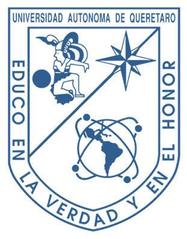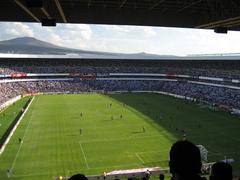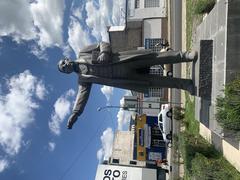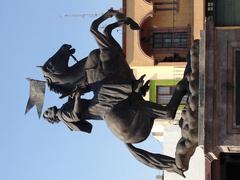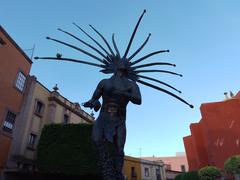Monument to the Boy Heroes in Querétaro: Visiting Hours, Tickets, and Travel Guide
Date: 14/06/2025
Introduction
The Monument to the Boy Heroes (Monumento a los Niños Héroes) in Santiago de Querétaro stands as a powerful tribute to six young military cadets—Juan de la Barrera, Juan Escutia, Francisco Márquez, Agustín Melgar, Fernando Montes de Oca, and Vicente Suárez—who gave their lives defending Chapultepec Castle during the Mexican–American War in 1847. Querétaro’s monument not only commemorates their sacrifice but also serves as an emblem of national identity, patriotism, and the city’s rich colonial heritage. Set within the UNESCO-listed historic center, the monument is a focal point for civic remembrance, educational events, and historical tourism, surrounded by the vibrant life and architecture of Querétaro.
This comprehensive guide covers everything you need to know for a memorable visit: historical background, monument features, visiting hours, tickets, accessibility, travel tips, nearby attractions, and frequently asked questions. For additional insights, official information, and historical context, consult resources such as the Wikipedia page on Niños Héroes, Querétaro’s UNESCO World Heritage listing, and the Naatik Mexico blog.
Table of Contents
- Historical Background & National Significance
- Monument Design and Symbolism
- Visiting Hours, Tickets, and Tours
- Accessibility and Visitor Facilities
- Special Events and Civic Ceremonies
- Nearby Attractions
- Travel Tips
- Frequently Asked Questions (FAQ)
- Plan Your Visit & Stay Connected
- References
Historical Background & National Significance
The Niños Héroes—six teenage military cadets—are venerated throughout Mexico as symbols of youthful patriotism and sacrifice. On September 13, 1847, they courageously defended Chapultepec Castle against advancing U.S. forces during the Mexican–American War (Wikipedia: Niños Héroes). Their story, immortalized in history and national memory, has been commemorated by monuments across the country, including the prominent structure in Querétaro.
Querétaro’s monument is part of the city’s living heritage—a place to remember the cadets’ heroism, teach new generations, and reinforce the values of national unity and resilience. The annual commemoration on September 13th draws visitors and locals alike for wreath-laying and civic ceremonies.
Monument Design and Symbolism
The Monument to the Boy Heroes in Querétaro features a neoclassical design that echoes the gravity and solemnity of the event it commemorates. Key architectural and artistic elements include:
- Six White Marble Columns: Each represents a fallen cadet.
- Bronze Eagles and Torches: Symbolize vigilance, honor, and sacrifice.
- Central Sculpture: An allegorical figure of the patria (motherland) often depicted cradling a fallen cadet and holding the national flag.
- Inscriptions and Plaques: Bearing the names of the cadets and the date of the battle.
- National Symbols: Use of the flag, eagle, and serpent motifs reinforce the patriotic message (Monumarq Blogspot).
The monument’s placement within the UNESCO-listed historic core allows it to blend harmoniously with Querétaro’s colonial architecture and serve as a gateway to exploring the city’s broader heritage (World Heritage Site: Querétaro).
Visiting Hours, Tickets, and Tours
- Visiting Hours: The monument is open daily, accessible 24 hours as it is located in a public plaza. For optimal experience and safety, visit between 8:00 AM and 7:00 PM.
- Tickets: Admission is free; there are no entrance fees or tickets required.
- Guided Tours: While the monument itself does not offer official tours, it is frequently included in city walking tours organized by local operators and tourism offices. Audio guides and mobile apps are also available for self-guided experiences (Backpacking Brunette).
Accessibility and Visitor Facilities
- Wheelchair Access: The monument is accessible via paved paths and ramps. The surrounding plaza and sidewalks are largely flat, though some cobblestone areas may require assistance for wheelchair users.
- Restrooms: Public restrooms are available in nearby parks such as Alameda Hidalgo and Jardín Guerrero.
- Seating & Shaded Areas: Benches and shaded spots provide comfort for visitors.
- Food & Drink: Numerous cafés, street vendors, and local restaurants are located within walking distance, offering regional snacks and drinks.
- Safety: Querétaro is considered one of Mexico’s safest cities, with well-maintained and well-lit public spaces. Exercise standard precautions after dark (Backpacking Brunette).
Special Events and Civic Ceremonies
- Annual Commemoration: Every September 13th, the monument is the site of official ceremonies, including flag-raising, wreath-laying, and educational activities honoring the Niños Héroes.
- Educational Events: Local schools frequently visit the monument for history lessons and patriotic ceremonies.
- Public Gatherings: The plaza is a popular spot for locals and visitors, especially in the afternoons and during holidays.
Nearby Attractions
Enhance your visit by exploring other highlights of Querétaro’s historic center:
- Querétaro Aqueduct: An iconic 18th-century structure and symbol of the city.
- Alameda Hidalgo: A tranquil park ideal for strolling and relaxation.
- Santa Rosa de Viterbo Church: A baroque architectural gem nearby.
- Cerro de las Campanas: The historic site where Emperor Maximilian was executed (Julie Around the Globe).
- Museo Regional de Querétaro: Offers deeper insight into the region’s history.
See The Vanabond Tales - Things to Do in Querétaro for more recommendations.
Travel Tips
- Footwear: Wear comfortable shoes suitable for cobblestone streets.
- Weather: Best times to visit are early morning or late afternoon, especially from March to May and July to October (Champion Traveler, Road to the Unknown).
- Sun Protection: Bring sunscreen and a hat; carry water during warmer months.
- Photography: Sunrise and sunset offer the best lighting for photos.
- Language: Basic Spanish enhances interactions with vendors and locals.
- Cultural Sensitivity: Learn about the Niños Héroes before your visit; be respectful during ceremonies.
Frequently Asked Questions (FAQ)
Q: What are the Monument to the Boy Heroes visiting hours in Querétaro?
A: The monument is open 24 hours a day as it is in a public plaza, but visiting between 8:00 AM and 7:00 PM is recommended.
Q: Is there an entrance fee or tickets required?
A: No, entry is free and no tickets are needed.
Q: Are guided tours available?
A: While there are no official tours at the monument itself, most historic walking tours of Querétaro include it. Audio guides and mobile apps are also recommended.
Q: Is the monument accessible for people with disabilities?
A: Yes, there are paved paths and ramps for wheelchair access.
Q: When is the best time to visit?
A: Early mornings or late afternoons on weekdays are ideal for avoiding crowds and enjoying pleasant weather.
Q: Are there amenities nearby?
A: Restrooms, benches, food vendors, and shops are available in the surrounding historic center.
Plan Your Visit & Stay Connected
Make the most of your trip by downloading the Audiala app for the latest visiting hours, guided tour options, interactive maps, and insider tips on Querétaro’s historical sites. For more information, check the Official Querétaro Tourism Website. Stay inspired by following us on social media and exploring our in-depth articles on Querétaro Historic Center Attractions and Top Cultural Experiences in Querétaro.
References and Further Reading
- Wikipedia: Niños Héroes
- World Heritage Site: Querétaro
- Cultura Colectiva: Boy Heroes in Mexican History
- Monumarq Blogspot: Monument Details
- Backpacking Brunette: Best Things to Do in Querétaro
- Naatik Mexico: Niños Héroes History
- The Vanabond Tales: Things to Do in Querétaro
- Official Querétaro Tourism Website
- Julie Around the Globe: Things to Do in Querétaro
- Champion Traveler: Best Time to Visit Querétaro
- Road to the Unknown: Best Time to Visit Querétaro
